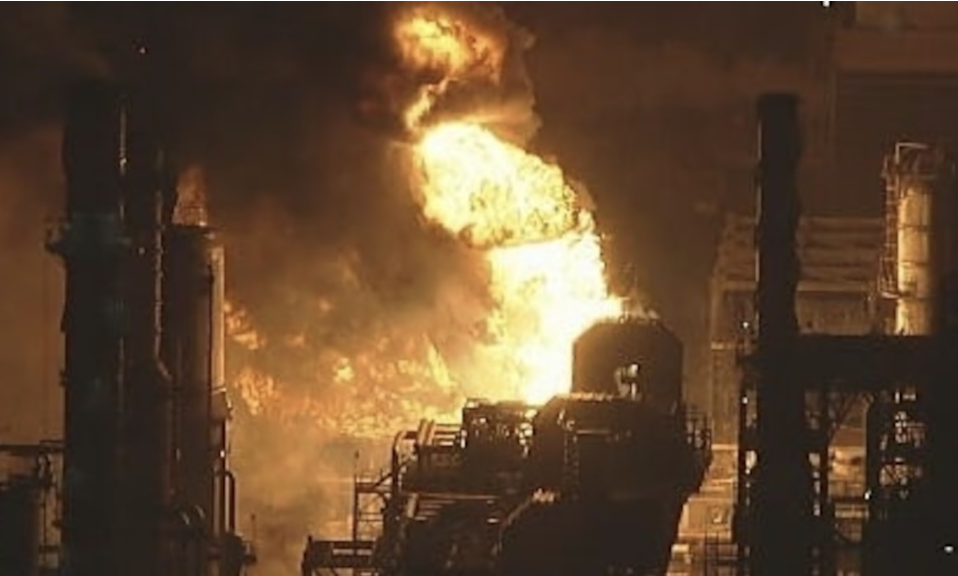A massive explosion followed by a raging fire tore through the Chevron refinery in El Segundo on Thursday night, sending plumes of flames into the sky that could be seen as far as 20 miles away. The blast occurred around 9:30 p.m., shaking nearby neighborhoods and sparking widespread concern across Los Angeles County.
Officials confirmed that the fire began after an explosion inside the sprawling refinery complex, though the cause remains under investigation. The Chevron facility, built in 1911, is the largest producing oil refinery on the West Coast, processing more than a quarter-million barrels of crude oil daily. Its location has long fueled safety concerns: it sits just south of Los Angeles International Airport and less than a mile from the Scattergood power plant, a critical source of electricity for the region.
Emergency responders from the El Segundo Fire Department, LA County Fire Department, and the refinery’s own firefighting team rushed to the scene. By late evening, officials said the fire had been contained to one area of the refinery. No evacuation orders were issued, but residents were urged to remain indoors as smoke spread through the area.
The South Coast Air Quality Management District reported that it had not detected elevated levels of particulate matter or toxic air pollutants immediately after the fire, though conditions could change as smoke lingered. Governor Gavin Newsom’s office said state and local agencies were coordinating to protect the community. Los Angeles Mayor Karen Bass confirmed that the fire had no impact on nearby airport operations.
The incident underscores the broader dangers of fossil fuel infrastructure embedded in densely populated urban areas. When refineries, gas storage sites, and power plants are located alongside homes, schools, and transit hubs, communities face constant risks of explosions, fires, and long-term pollution.
On the Westside, the Playa del Rey gas storage facility is a prime example. Nearly half a million people live within five miles of the site, where Southern California Gas Co. stores natural gas in aging wells drilled into a depleted oil field beneath the Ballona Wetlands and surrounding neighborhoods. Many of its wells date back to the 1930s, and the facility has a documented history of leaks and blowouts. A 2019 incident in Marina del Rey spewed gas, water, and mud into the air, briefly creating a geyser 100 feet high.
Chevron’s impact, however, extends far beyond Los Angeles. The company has faced criticism globally for polluting communities, displacing Indigenous people, and entrenching fossil fuel dependence. It operates in ways that not only worsen the climate crisis but also support systems of violence abroad. Its gas fields and infrastructure in the eastern Mediterranean, for example, are tightly integrated into Israel’s economy and military occupation. Revenues from Chevron’s operations help finance a government carrying out a devastating assault on Gaza, where fuel and energy blockades have become weapons of war.
The El Segundo fire is not an isolated industrial accident but part of a larger pattern. So long as fossil fuel facilities remain woven into the fabric of neighborhoods and tied to violent systems abroad, communities will live under constant threat, from fires and explosions here at home, to war, displacement, and genocide overseas.

